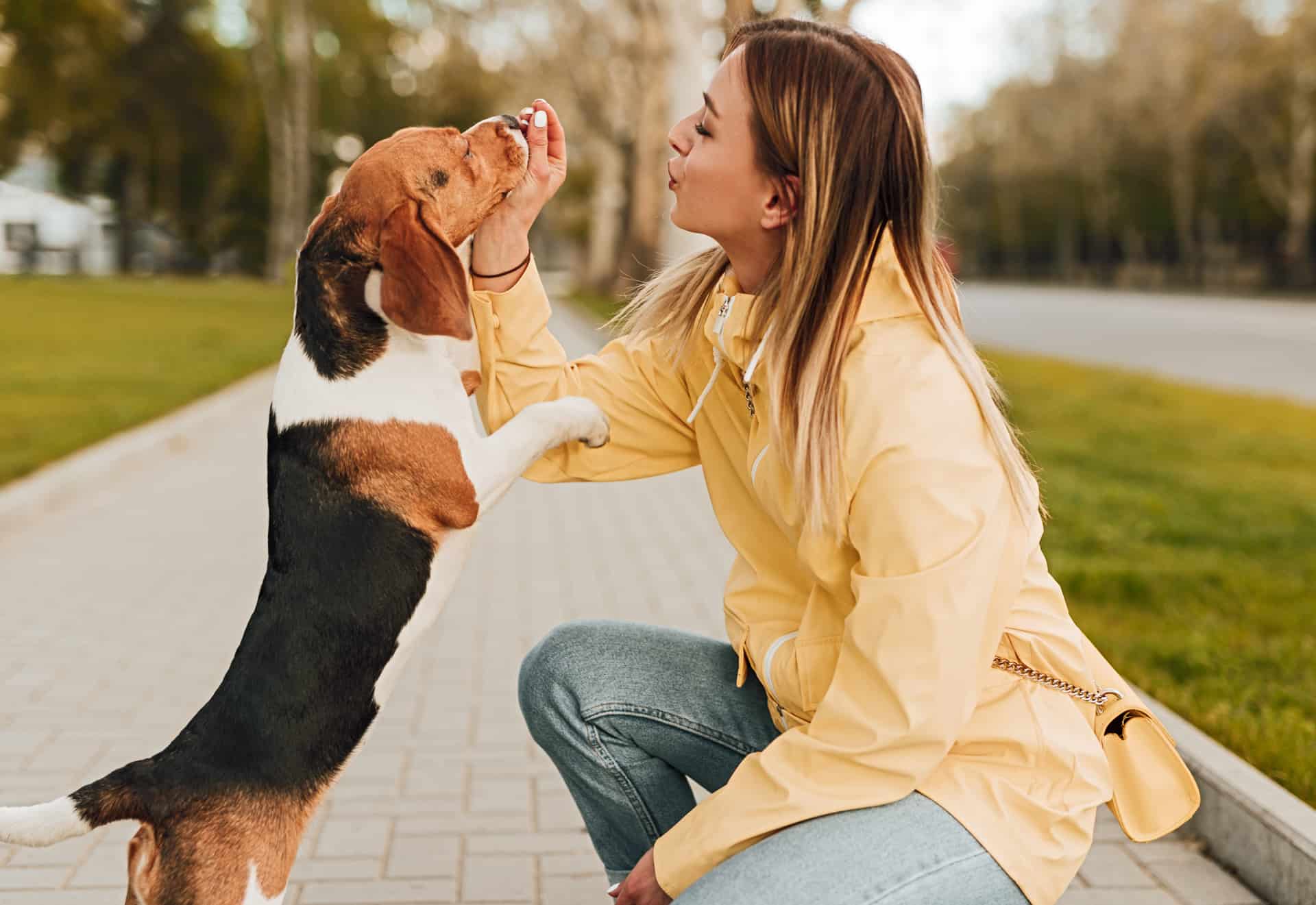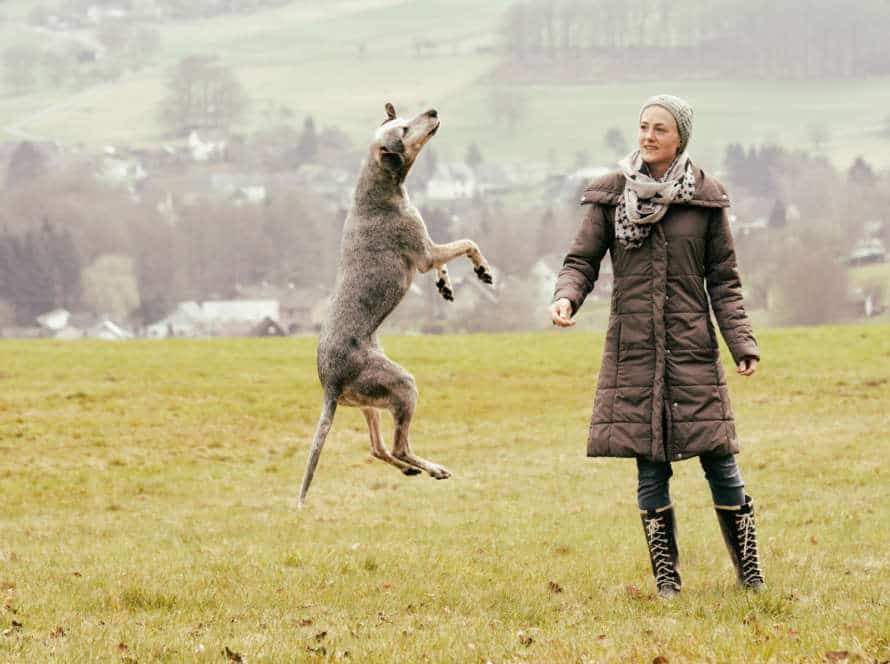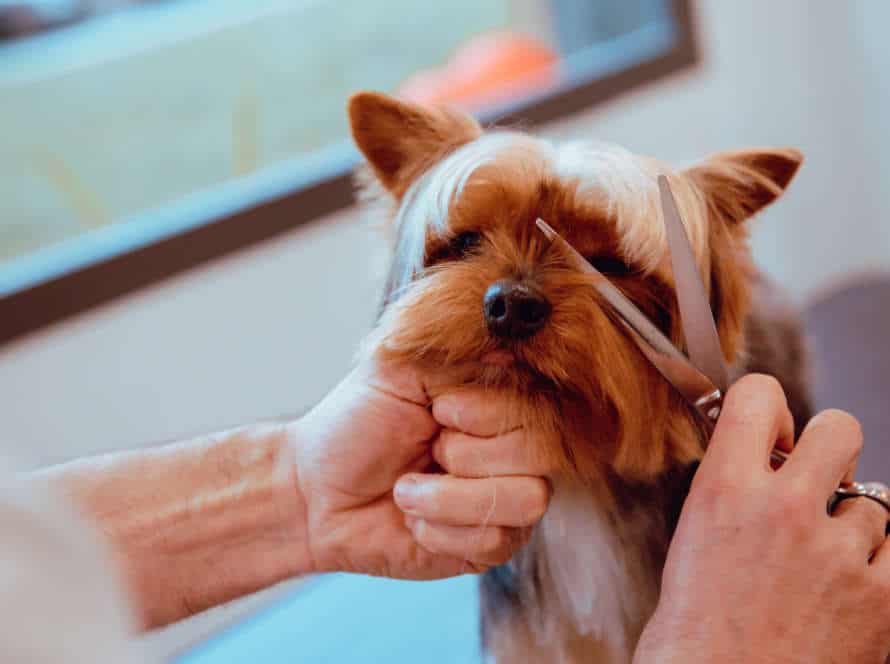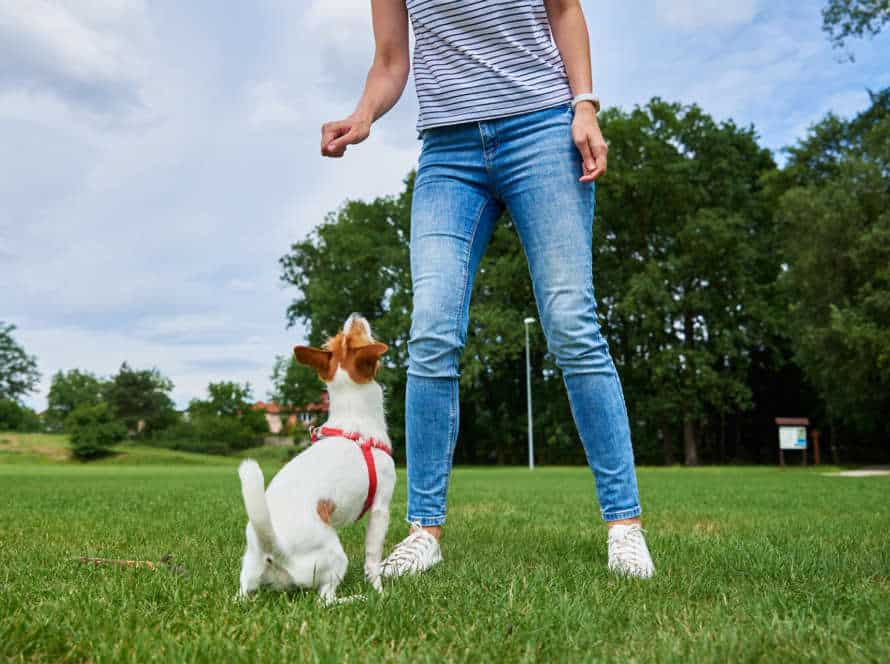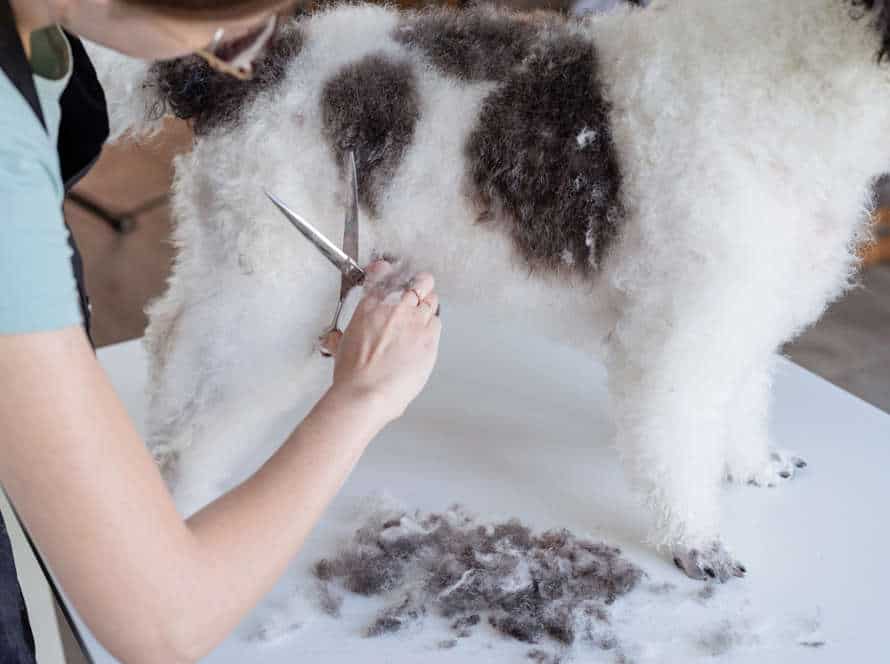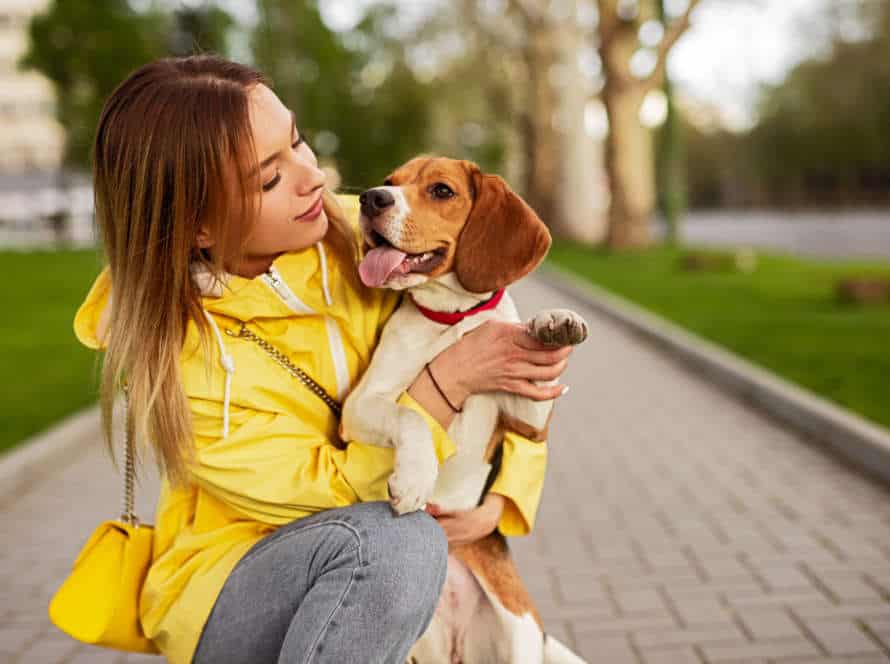The Art of Positive Reinforcement: Techniques for a Well-Behaved Dog
Positive reinforcement is a great way to train your pup and build a strong bond! Here are some tips to get started:
- Praise and reward your dog for good behavior with treats.
- Use a clicker to mark the desired behavior, then give a treat.
- Keep rewards regular to let them know what’s expected.
- Start small and work up to more difficult tasks.
- No punishment or yelling – this can cause fear and confusion.
Positive reinforcement will help you create a well-behaved dog and strengthen your relationship with them!
Understanding Positive Reinforcement
Positive Reinforcement can teach your pup the right behavior. It rewards desired behavior, which encourages the animal to repeat it. To use this tool successfully, you must understand the basics of Positive Reinforcement. In this article, we’ll discuss how to use it for training your pup.
Definition of positive reinforcement
Positive reinforcement is a training technique. It rewards desirable behavior to make it more likely to be repeated. Rewards can be anything the subject enjoys, such as treats, praise, or toys. After being rewarded, the subject is more likely to repeat the same behavior to get a reward again.
Positive reinforcement is well-known for training dogs. It encourages wanted behaviors, like sitting and staying, while discouraging unwanted behaviors like barking and biting. The art of positive reinforcement requires time, patience, and consistency. Ignoring or giving mild reprimands can also help.
Benefits of using positive reinforcement for dog training
Positive reinforcement is an awesome way to train your pup! It’s better than punishing or dominating them. Here’s why:
- Builds trust and strengthens the bond between you and your dog.
- Encourages good behavior and discourages bad ones without hurting, scaring or making them aggressive.
- Makes learning fun and enjoyable for your pup, boosting their motivation and eagerness to learn.
- Reduces stress, fear and anxiety in your pup, promoting their mental health.
- It’s a long-term solution, allowing them to develop good habits and behaviours, rather than just suppressing bad ones with punishment.
Treats, praise and playtime are great tools for positive reinforcement and will help your pup become a happy, well-behaved and eager-to-please pooch.
Types of positive reinforcement (treats, praise, playtime)
Positive reinforcement is a great way to train your pup! Here are 3 techniques you can use:
- Treats! Dogs adore treats and they can be used to reward and encourage good behavior. Don’t give too many though – keep them small and healthy.
- Praise! Verbal praise like “good job” or “well done” works wonders. Speak with a happy and excited voice.
- Playtime! Playing with your dog will reinforce their positive behavior.
Remember, positive reinforcement should always be used with clear and consistent commands. Pro tip: Start with a yummy treat then transition to verbal praise or playtime when the behavior becomes more consistent.
Using Positive Reinforcement for Training
Positive reinforcement is an awesome way to teach your pup good behaviour and obedience! It focuses on rewarding desirable actions, and removing those that aren’t wanted. With positive reinforcement, you can successfully train your canine companion to learn things like following commands and being obedient. Let’s take a peek at how to use positive reinforcement for training!
Basic Obedience Commands
Basic obedience commands are a must for a well-behaved dog. Positive reinforcement is a great way to teach them. Here’s how:
- Sit: Move a treat near your dog’s nose, making their head go up and their bottom go down. Give them the treat and praise them when they sit.
- Stay: Put your dog in a sitting position. Sign them to stay with an open hand. Reward and praise them when they stay. Gradually increase the distance over time.
- Come: Hold a treat and say “come” in a happy tone. When they come to you, reward and praise them.
Positive reinforcement like treats, toys, and praise can help reinforce these commands. This encourages your pooch to keep learning and obey commands, creating a strong bond with you. Pro tip – Be patient and practice in short sessions for the best results.
Sit
“Sit!” is a basic command all well-behaved dogs should know. Positive reinforcement is the best, kindest way to teach your pup how to sit. Here’s how:
- Speak clearly and firmly: “Sit!”
- Hold a treat near its nose. Move it up and back over its head.
- As its head follows the treat, its bottom will drop to the ground.
- Give it the treat and praise it as soon as it sits.
- Repeat the training multiple times until it can sit without the treat.
Be patient, consistent, and positive with your training. With positive reinforcement, your pup will be sitting in no time!
Stay
Teaching your pup to stay is a key part of obedience and safety. Positive reinforcement is a great way to help. Here’s how:
- Start by telling them to “sit” or “down”.
- Gradually move further away, making eye contact and repeating “stay”.
- If your pup stays, reward them with praise, treats, or a toy.
- If they break, take them back and start again.
- With regular practice and positive reinforcement, your pup will learn to stay in place, even with distractions.
Come
Positive reinforcement is a great way to teach your pup new behaviors and strengthen good ones. “3 Come” is one such method. Here’s how it works:
- Find a low-distraction environment, like your living room or yard.
- Say your pup’s name and then “come”.
- Once they come to you, give them a treat and praise them joyfully. Pet them if they like it.
- Do this several times a day. Increase the distance apart and add distractions gradually.
Pro tip: Use positive reinforcement, never punishment or negative reinforcement, when training your pup. This will help create a strong bond between you and them, and make training more enjoyable.
Leash Training
Leash Training with positive reinforcement is great for canine-human bonding. Positive reinforcement is where you reward good behavior, not punish bad. Here are some tips for leash training your pup using positive reinforcement:
- Shorter walks first, then increase duration and distance.
- Get a lightweight leash and comfy harness.
- Treats and praise for good behavior, like walking by your side and responding to commands.
- No scolding or punishing for bad behavior – this can cause anxiety and hurt the bond.
- Stay consistent with words and tone to train your pup.
Pro tip: Positive reinforcement works best on puppies and young dogs, but can be effective on older dogs too.
Loose leash walking
Loose leash walking is a must for your pup. Positive reinforcement is key! Here are some tips:
- Reward your dog with treats and praise when the leash is loose.
- Use a clicker to mark the behavior and connect it to the treat.
- If your pup pulls, stop and don’t move until they come back to you. Reward them when they do.
- Redirect their attention to you with positive reinforcement when they’re distracted.
- Also, make sure they have good training and the right harness or collar.
“Leave it” command for distractions
The “Leave it” command is a great way to reduce distractions and teach your pooch impulse control with positive reinforcement. To train your pup on it, follow these steps:
- Hold a treat in a closed fist. Let your pup sniff and lick it.
- Say “Leave it” and wait for them to stop trying to get the treat out of your hand.
- As soon as your pup looks away, give them praise and reward them with a different treat.
- Repeat the process, making the distractions harder each time, until your pup can confidently “Leave it” on command.
Remember: consistency is key for successful training. Always reward good behavior with praises and treats!
Stop pulling on the leash
Leash-pulling is a problem for many dog owners on walks. It can cause discomfort in both the owner and the pup. Instead of tugging, positive reinforcement techniques can help train dogs not to pull. Here’s how:
- Begin training in a quiet, low-distraction place like your backyard.
- Use treats to lure your pup to walk beside you. Praise and reward with a treat when it does.
- If it pulls on the leash, stop walking and wait for it to return. Again, praise and reward when it does.
Patience and consistency are key. With practice, dogs can learn to walk without pulling.
Training for Behavioral Issues
Dealing with your dog’s behavior? Positive reinforcement training is the key! It involves rewarding desirable actions and redirecting or ignoring those that are not. Here’s how to use this method to train your pup and put a stop to misbehaving.
Separation Anxiety
Separation anxiety is common in many dogs. It can be addressed using positive reinforcement training techniques. It is important to be patient and consistent. Here are some tips to help:
- Start with short separations and increase the time gradually.
- Provide distractions like toys or kibble-dispensing toys.
- Practice leaving and coming back without making a fuss.
- Give treats, praise, and playtime when the dog is relaxed.
- Consider enrolling in a positive reinforcement-based obedience training class.
Fear and Aggression
Fear and aggression are two all-too-common behavioral problems that pet owners tackle. But, they can be solved with positive reinforcement techniques.
For fear: Let your pup get used to the thing they are afraid of, bit by bit. Give rewards when they stay calm. For example, say they fear loud sounds – start off quiet and increase the sound slowly. Give treats and praise as they stay calm.
For aggression: Alternative behavior can be taught, such as sitting or dropping a toy. Heavily reward them for the new behavior and ignore aggression.
Regular training with positive reinforcement can help to reinforce good behavior and tackle the bad. Resulting in a well-behaved, happy pup!
Barking
Barking can be managed with positive reinforcement!
Identify what behavior you want from your pup, and avoid reinforcing the undesired behavior.
Reward your pup with treats, praise, or playtime for good behavior.
Be persistent and consistent to get the best results.
No physical punishment – it can make your pup scared.
If you need support, seek help from a pro!
Remember: patience and consistency are essential for success with positive reinforcement.
Best Ways to Reward Your Dog with Positive Reinforcement
Positive reinforcement is an awesome way to teach your pup. Vocal compliments, physical love, and treats are all great rewards. Let’s investigate the best methods of rewarding with positive reinforcement and how to use those rewards efficiently.
Treats and food rewards
Treats and food rewards are great for reinforcing positive behavior in dogs and strengthening the bond between humans and their pups. But, you have to be strategic and moderate when using treats and food rewards, or you risk negative consequences like overeating, weight gain, and a lack of motivation.
Here’s how to use treats and food rewards as positive reinforcement:
- Mix up the treats, including higher-value treats for more challenging behaviors.
- Reward good behavior with treats, not use them as a bribe.
- Be sparing with treats and incorporate other rewards like verbal praise and playtime.
- Keep treats small and healthy to avoid overfeeding.
- Slowly phase out treats as the dog’s behavior improves to avoid dependence.
Praise and Affection
Reward your pooch with positivity! Dogs are social creatures that crave attention, love, and physical contact. Praising and showing affection can upgrade their behavior and make them feel valued. Here are a few tips:
- Verbal Praise: Speak sweetly when they do something great, like ‘good boy‘ or ‘good girl‘.
- Physical Touch: Pet, stroke, and snuggle them with gentle touches and soft tones.
- Treats: Treats provide positive reinforcement, but use them sparingly as too many can be unhealthy.
- Quality Time: Best reward of all. Take them out on walks, play with them, and engage in activities they adore.
Be consistent with your praise and affection and your pup will quickly learn desirable behavior.
Playtime and Fun Activities
Playtime and fun activities are great rewards for your canine pal! They help your pup feel joy, peace, and loved. Dogs love interaction and play, and adding these activities to your pup’s everyday routine can help reinforce good behaviour and strengthen your bond. Here are some ideas for playtime and fun activities for positive reinforcement:
- Hide and seek: Hide a favourite toy or treat and get your pup to find it using their nose. Praise, cuddles, and pats are great rewards for success!
- Fetch: This one encourages your pup’s natural instincts to chase and hunt. Reward them with praise when they bring back the object.
- Puzzle toys: These interactive toys keep your pup’s mind active and challenged. Praise and treat them for solving the puzzle.
- Agility training: Running and jumping through an obstacle course is a fun and rewarding way to burn off energy and reward good behaviour. Positive verbal cues, treats, and toys all work as rewards.
Positive reinforcement is key to encouraging good behaviour and strengthening your connection with your furry friend.
Positive Reinforcement Pitfalls to Avoid
Positive reinforcement is an amazing tool for training dogs. But, there are some mistakes you should avoid! Inconsistent communication, over-rewarding, and unintended reinforcement are all traps to watch out for. Let’s discuss these issues in more detail and learn how to use positive reinforcement correctly.
Inconsistent Training
Inconsistent training is a huge no-no when teaching your dog with positive reinforcement. Dogs need consistency. If you’re inconsistent with rewards and expectations, it can cause confusion and frustration for your pup.
Here are some mistakes to avoid:
- Timing: Reward your dog straight away when he does the desired behaviour. Not later.
- Rewards: Use the same rewards all the time – treats, verbal praise or a toy. No mixing it up.
- Rules: Everyone in the house must know the same rules, so your dog gets a consistent routine. If one person says yes and another says no, it can be confusing for your furry friend.
Consistent training helps your dog learn faster and better, leading to a healthier relationship.
Over-rewarding
Text: Over-rewarding is a pitfall with positive reinforcement training. It involves giving too many rewards, which can make your dog rely on them. Here are 5 tips to avoid over-rewarding:
- Only give treats your dog loves, but not too much.
- Combine treats with verbal praise and physical affection.
- As your dog learns the good behavior, reduce the amount of treats given.
- Reward only the desired behavior – not every time.
- Positive reinforcement is about reinforcing good behavior, not just treats. Pro tip: Make training sessions brief and fun for your dog.
Using positive reinforcement in a harmful way
Using positive reinforcement to promote bad behavior in a pup can be as bad as using punishment to stop it. Here are some traps to dodge while using positive reinforcement to train your pup:
- Don’t depend too much on treats. If you depend too much on treats, your pup may think they are the only thing that make them perform a certain action. This can lead to disobedience or selective obedience if there are no treats or the treats are not so appealing.
- Avoid rewarding undesired behavior. When you unintentionally reward your pup for things like jumping up or biting, they may keep doing it because they link those behaviors to positive reinforcement.
- Be consistent. If you are inconsistent with rewards, your pup may get confused and frustrated. This can cause your pup to behave erratically, including not responding when rewards are not given.
It is necessary to be aware of these traps and avoid them when using positive reinforcement methods to train your pet. Instead, be clear and consistent in your training, and use treats as a supplement for your pup’s diet instead of a replacement for good training.
Conclusion: The Positive Reinforcement Approach for Training Your Dog.
To wrap it up, positive reinforcement is a humane, efficient way to teach your pup proper etiquette. Rewards like treats, toys, and compliments should be given when they do something good. Here are some tips:
- Give them something they love – only during training sessions.
- Be clear and consistent with commands.
- Praise right away when they act right.
- Don’t yell or physically punish – it can cause fear and aggression.
With patience, you can teach your pup a lot. Pro tip: Have fun and enjoy the journey with your furry mate!
Frequently Asked Questions
Q: What is positive reinforcement for dogs?
A: Positive reinforcement for dogs is a training technique that involves rewarding good behavior with treats, praise, or other positive reinforcement to encourage a behavior to become more frequent.
Q: What are the benefits of using positive reinforcement for my dog?
A: Positive reinforcement is an effective and humane way to train your dog. It helps to build trust and strengthen the bond between you and your dog, while also promoting good behavior and reducing the likelihood of undesirable behavior.
Q: How do I use positive reinforcement to teach my dog a new command?
A: Start by choosing a command and deciding what behavior you want your dog to exhibit when you use that command. When your dog exhibits the desired behavior, immediately reward them with praise, treats, or other positive reinforcement. Repeat this process until your dog consistently exhibits the desired behavior when you use the command.
Q: Can positive reinforcement be used for all types of dogs?
A: Yes, positive reinforcement can be used for all types of dogs, regardless of their breed, size, or age. It is a safe and effective training technique that can be adapted to suit each individual dog’s needs and learning style.
Q: Do I need to use a clicker for positive reinforcement training?
A: A clicker is not necessary for positive reinforcement training, but it can be helpful for some dogs as it provides a consistent and distinct sound to associate with the behavior being rewarded. However, verbal praise and treats can also be used effectively as positive reinforcement without the need for a clicker.
Q: How long will it take for my dog to learn a new behavior using positive reinforcement?
A: The amount of time it takes for a dog to learn a new behavior using positive reinforcement will depend on various factors such as the dog’s age, breed, and current level of training. Consistency and patience are key, and it is important to allow your dog enough time to understand and learn the new behavior at their own pace.

